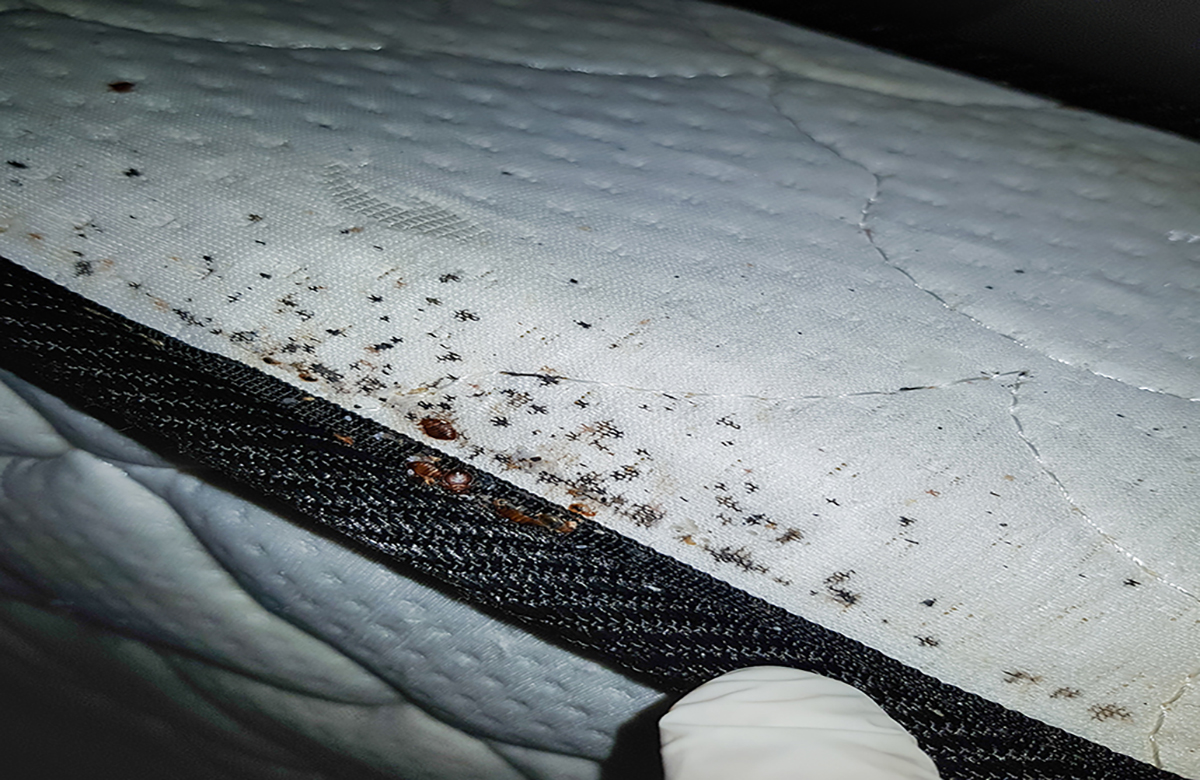December 13, 2022
special feature
Image of the components of an avionics suite for a 10mg mosquito robot on a finger. These include a 2mg gyroscope, a 3mg microprocessor and a 1mg optical flow sensor. Photo credit: Fuller, Yu & Talwekar.
Lightweight and flying robots the size of small insects could have very valuable real-world applications, such as assisting search and rescue missions, inspections of dangerous sites, and even space exploration.
Despite their potential, these robots have so far proved difficult to realize, particularly due to technical problems encountered in trying to stabilize their flight and artificially replicate the innate hovering abilities of insects.
University of Washington researchers recently developed a flight control and wind sensor system that could help address this challenging robotics problem and finally enable stable flight of robots as small as a mosquito. This system, introduced in Science Robotics, is based on the use of accelerometers, a sensor that can measure the acceleration of moving devices, objects, or bodies.
“For nearly 40 years, roboticists and microfabrication experts have dreamed of creating mosquito-sized robots weighing just a few milligrams — first proposed by Anita Flynn at Berkeley,” said Sawyer Fuller, one of the researchers who conducted the study, told TechXplore.
“She and Rodney Brooks later wrote the entertaining memoir ‘Fast, Cheap, and Out of Control: A Robotic Invasion of the Solar System,’ which proposed sending out tiny robots to explore the solar system, otherwise known as ‘smart dust.’ Such robots would be much smaller than the 100 mg bumblebee-sized robot that students in my lab have developed so far called UW Robofly.”
In recent years, many roboticists around the world have attempted to develop propulsion systems for insect-sized robots weighing 10 mg or less, and many have been successful, including researchers from Berkeley University and the Army Research Labs. But reliably stabilizing and controlling the flight of these incredibly small robots has so far proved problematic.
“Typically, small flapping wing robots and drones are unstable without feedback control,” explains Fuller. “When you turn on the wings or rotors, they quickly tumble out of the sky. Flies are thought to compensate for this by using gyroscopic halters for feedback. So an obvious solution would be to add a gyroscope to the robot design.”
Images of the components of an avionics suite for a 10 mg mosquito robot on a US quarter coin. These include a 2mg gyroscope, a 3mg microprocessor and a 1mg optical flow sensor. Credit: Fuller.
While the integration of gyroscopes could theoretically help overcome technical problems related to the flight of small flying robots, the gyroscopes available today are nowhere near as light or as efficient as they need to be to fly on such lightweight devices. The lightest gyroscope developed to date weighs 15 mg, which is 5 mg more than the weight of an entire mosquito-sized robot.
“Our proposed solution to this problem stems from my PhD work, where I found that flies use wind sense from their feather-shaped antennae to guide their flight,” Fuller said. “We’ve shown in this article that you can do what flies do, which is measure airspeed, using another type of sensor, an accelerometer. The big advantage is that accelerometers are inherently much smaller and more efficient than gyroscopes. Regal in a pack weighing just 2 mg.”
Aside from being much lighter than gyroscopes, accelerometers, coupled with good models of robot dynamics, can also help estimate robot pitch angles during flight. In their design, Fuller and his colleagues also incorporated an equally lightweight optical flow sensor and a tiny microprocessor to also estimate a robot’s altitude and wind strength.
“When we compared a simulated response of our system to a gust of wind to the response of fruit flies to the same gust of wind, we found that the two systems behaved quite similarly,” Fuller said. “So now we have an interesting hypothesis to test about insect flight control. Namely, that flying insects that don’t have gyroscopes, like bees and moths, might be able to stabilize their unstable flight dynamics by sensing wind with their antennae.”
Fuller and his colleagues tested their system in both simulations and real experiments using a 30-gram robot and found that it was able to successfully stabilize its flight, allowing it to replicate the flight dynamics of fruit flies. They hope it will be applied and tested on many other flying robots in the future, including lighter robots weighing 10 mg or less.
“We were able to design a stabilizing flight control system based on off-the-shelf parts that’s small enough for a mosquito-sized robot,” Fuller added. “Our system could also be adapted for larger robots like the 100mg UW Robofly, allowing more payload to be used for a larger battery or other sensors. In our next studies we plan to demonstrate it while flying the UW-Robofly.”
More information:
Sawyer Fuller et al., A gyroscope-free visual inertial flight control and wind sensing system for 10 mg robots, Science Robotics (2022). DOI: 10.1126/scirobotics.abq8184
© 2022 Science X Network
Citation: A Gyroscope-Free System to Efficiently Control the Flight of Insect-Sized Robots (2022 December 13) Retrieved December 13, 2022 from https://techxplore.com/news/2022-12-gyroscope-free-efficiently-flight- insec-size-robot.html
This document is protected by copyright. Except for fair trade for the purpose of private study or research, no part may be reproduced without written permission. The content is for informational purposes only.








